Phoenix launches a Citywide food drive to assist residents experiencing food insecurity during the holidays.
Monarch
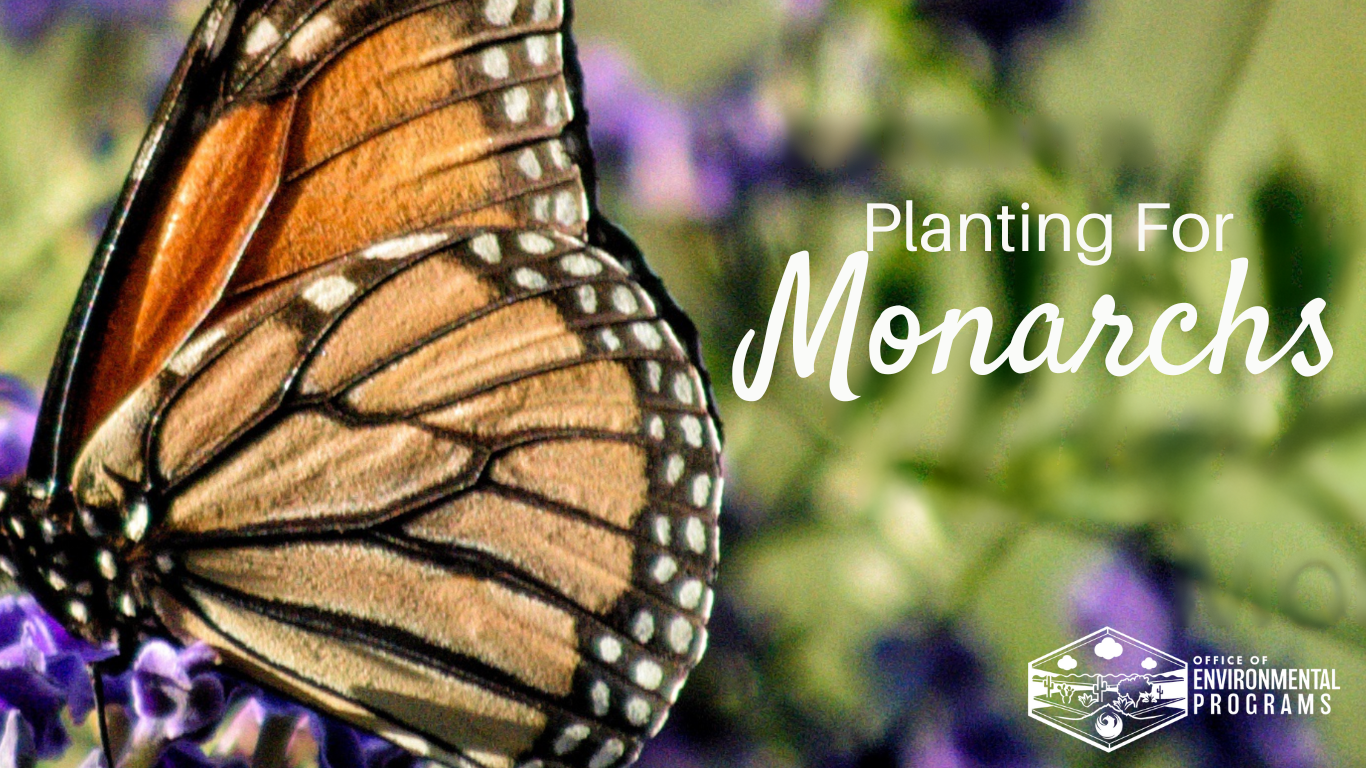
Thank you for making September Planting for Monarchs Month a success!
From attending events, to planting seeds and purchasing desert milkweed, your efforts make a difference for the monarch butterfly and other pollinators! Thank you also to partners Butterfly Wonderland, Black Mountain Nursery, Dig It Gardens, Summerwinds Nurseries, and Treeland Nursery for their support of 2025’s Planting for Monarchs Month.
Let’s Keep Planting for Monarchs!
The September Planting for Monarchs Month celebrations may be over for this year, but we never stop helping the monarch butterfly and our pollinator friends. With you as our partner, we can make a difference. All it takes is adding one or more native plants, especially milkweed, to your yard or patio. Check out the rest of this webpage for resources and ideas, including a mini native plant guide (full one coming in early 2026!) and a kids activity book. Do you like to grow from seed and are a Phoenix resident? Email oepinfo@phoenix.gov to request a free Sonoran Desert monarch seed packet, while supplies last.
Follow @phxenvironment on social media for more monarch butterfly information throughout the year and other cool information from the City of Phoenix Office of Environmental Programs!
Support Monarch Butterflies at Nature Fest PHX!
Gear up for this free, fun family event celebrating our community’s connection to nature. Get up close to live wildlife, watch an outdoor puppet show, let your creativity soar in the art zone, help with a river cleanup, plant for pollinators, and much more! With so many opportunities to participate plus hourly prize drawings, you won’t want to miss it. Find out more at www.phoenix.gov/naturefestphx. See you there!
*NEW RELEASE:* Download our latest monarch butterfly resource - a free activity book featuring our monarch ambassadors, Monica and Miguel. Have fun learning about monarch butterflies with a crayon in your hand!
*NEW RELEASE:* Download our brand new mini native plant guide for pollinators. The full version with more plants and tips for planting and maintenance will be out in February 2026!
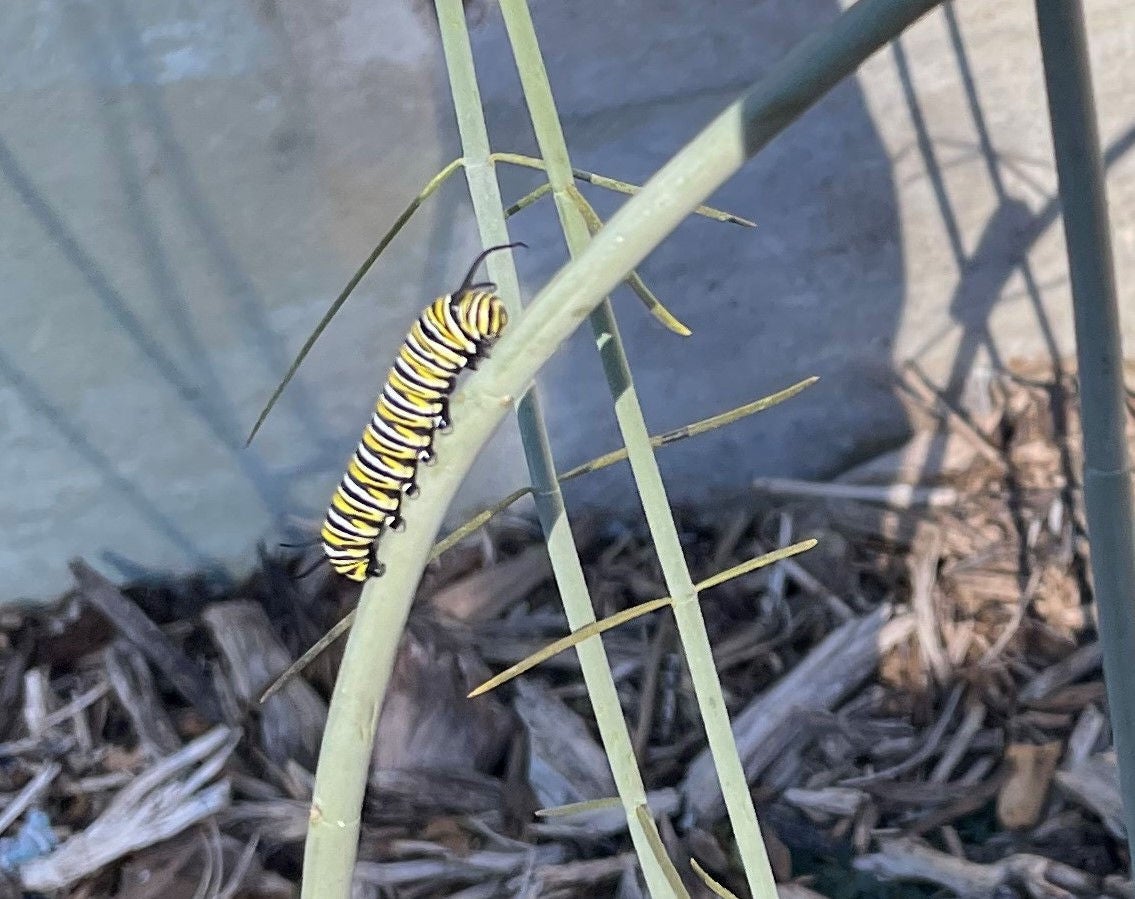
Monarch Conservation
Phoenix joined the Mayor's Monarch Pledge in 2021 to help support their multi-generation, 3,000-mile-long migration. Keep your eyes peeled for these beautiful butterflies in the Fall through Spring in Phoenix. This species is struggling due to habitat loss, pesticide use, and climate change, but we can help.

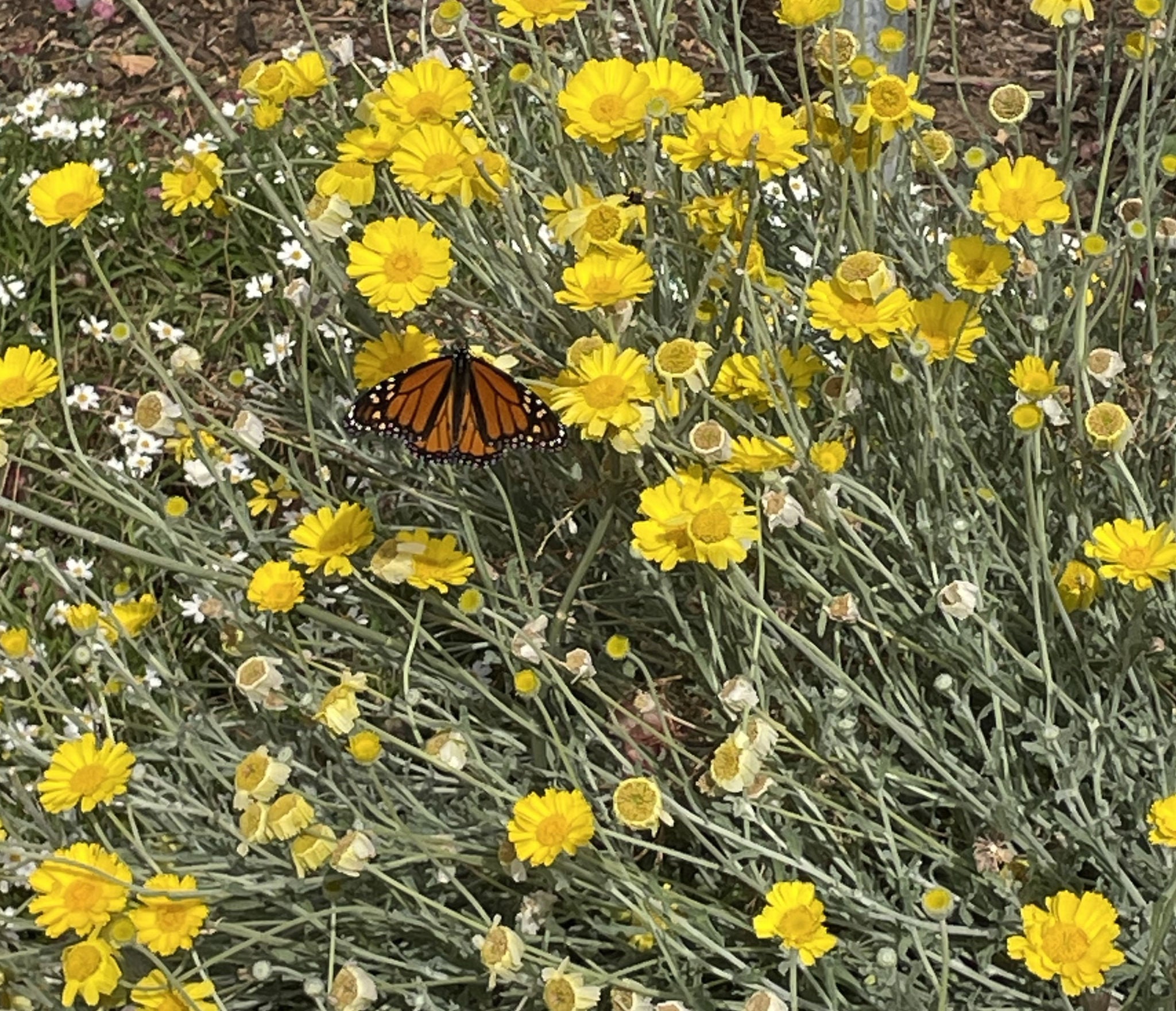
Help the monarch butterfly Survive and Thrive!
Help the monarch butterfly Survive and Thrive!
Join us in the pledge by planting native milkweed and other native nectar plants to help the monarch butterfly and other pollinators! Let us know what you did on social media using #PlantingforMonarchs. Check out these top tips on how to help.

Planted a Polinator Garden? Consider registering a monarch waystation or pollinator pathway:
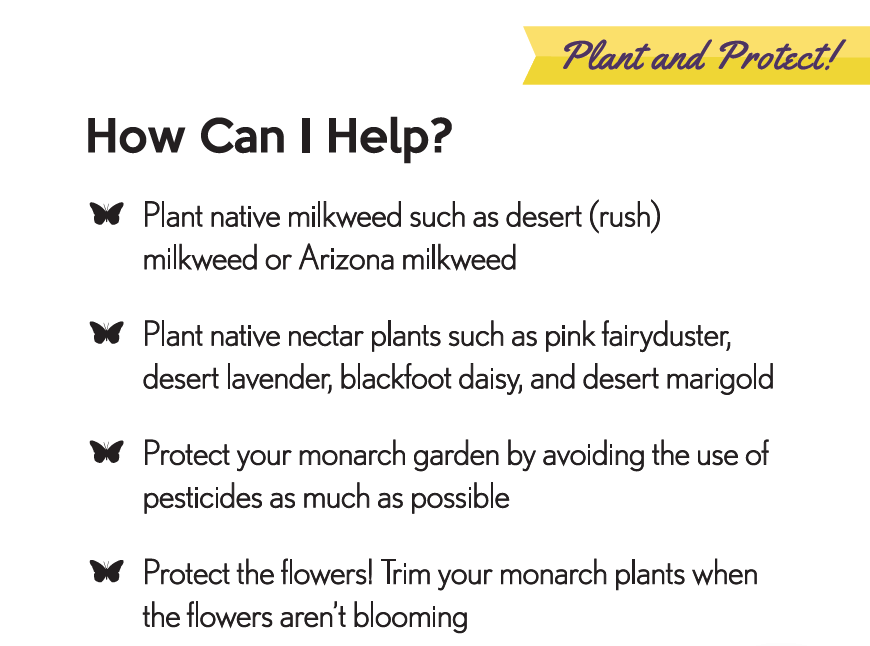
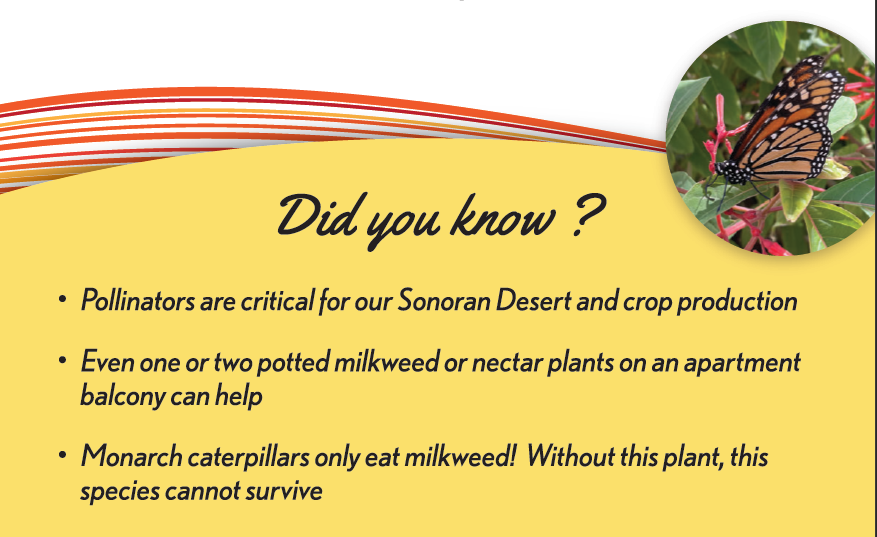
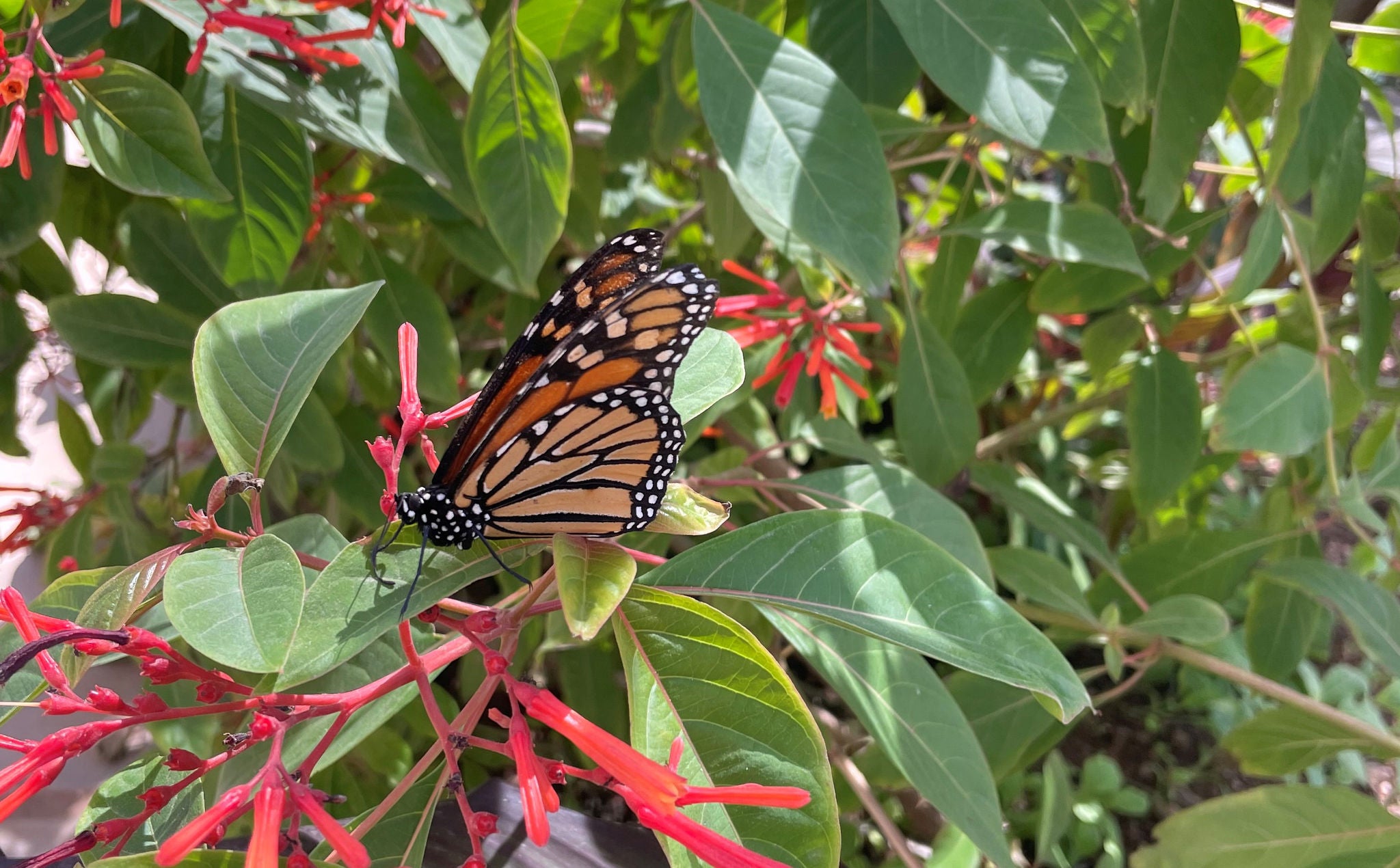
View the Mayor's 2021 Monarch Proclamation

Native Plants
Planting native plants are essential for the monarch butterfly and other pollinators, while also supporting our Sonoran Desert biodiversity and conserving water.
Need ideas on what to plant? Check out this list of native plants.
Resources
- Participate in monarch butterfly mapping citizen science
- Participate in milkweed mapping citizen science
- Southwest Monarch Study
- Desert Botanical Garden - Monarch ButterFlies and Milkweeds
- Pollinator Conservation Resources: Southwest Region
- AZ Monarch Collaborative Native Plant Sources
- Xerces Society Managing for Monarchs in the west
- National Wildlife Federation
- Monarch Joint Venture
- Maricopa Native Seed Library
- Monarch Education Resources
Ideas or suggestions? Email oepinfo@phoenix.gov with “monarch" in the subject line
 Photograph by William Vann
Photograph by William Vann